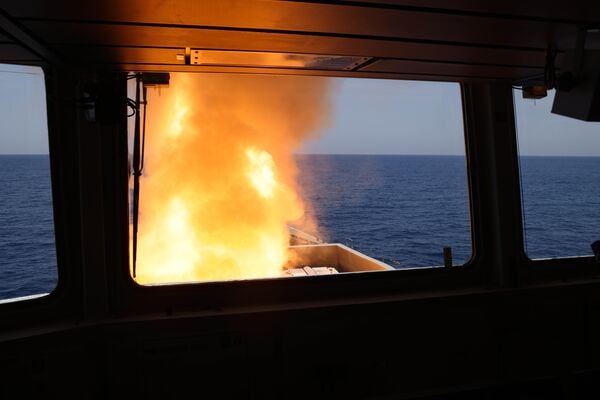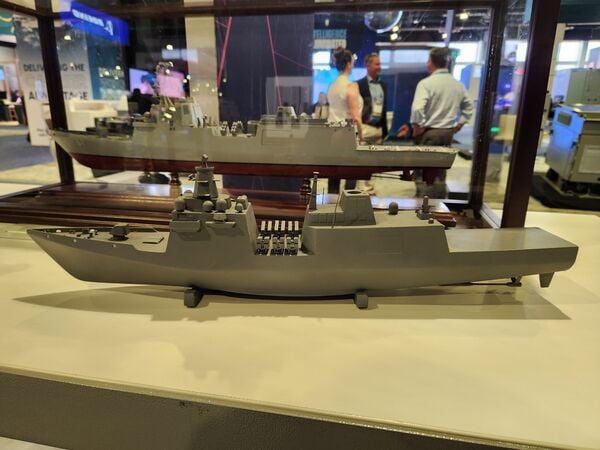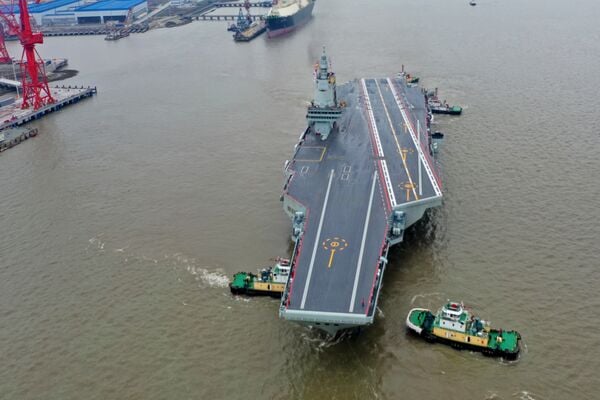- About
- Intara
- Capabilities
- Advisory
- Resources
- News
- Store
HMS Diamond shoots down Houthi missile in Red Sea
26 April 2024
by Kate Tringham


HMS Diamond shoots down a missile fired by Iranian-backed Houthis from Yemen over the Gulf of Aden using its Sea Viper missile system – the first time a Royal Navy warship has intercepted a missile in combat since 1991. (Royal Navy/Crown Copyright)
The UK Royal Navy's (RN's) Daring (Type 45)-class destroyer HMS Diamond (D 34) has successfully engaged an anti-ship ballistic missile (ASBM) launched by Yemen-based Ansar Allah (commonly known as Houthi) rebels targeting a merchant ship in the Gulf of Aden, the service confirmed on 25 April.
During the incident, which took place around 1151 h local time (Sanaa time) on 24 April, Diamond used its Sea Viper anti-air guided weapon system to shoot down the missile, the navy said. According to a US Central Command (CENTCOM) statement issued on 25 April, the missile was likely targeting the US-flagged, owned, and operated merchant vessel MV Yorktown, which has 18 US and four Greek crew members onboard.
No injuries or damage was sustained by the ship or its crew, CENTCOM said.
Diamond
Gibbs & Cox takes aim at light frigate market with International-class design
07 May 2024
by Jeremiah Cushman


A model of the Gibbs & Cox International-class light frigate displayed at the Navy League Sea-Air-Space exposition in April 2024. (Janes/Jeremiah Cushman)
Gibbs & Cox, a wholly owned subsidiary of Leidos, has developed a platform to meet global demand for smaller frigates, William Cowardin Jr, vice-president for global ship design, Gibbs & Cox, told Janes in April during the Navy League Sea-Air-Space 2024 global maritime exposition in National Harbor, Maryland. What the company calls the International class began as an internal research and development effort to develop a next-generation hull and test it to determine how big or small it could be and various mission packages that could be integrated, he said.
The design is simpler to construct so that it can be produced by smaller shipyards or yards that have not previously built warships. It employs mature technologies, such as the GE Aerospace LM2500 gas turbine with a basic combined diesel-electric and gas (CODLOG) propulsion architecture, Cowardin Jr said. Gibbs & Cox brings significant experience in working with shipyards, including being able to tailor production packages to meet a yard's specific needs.
France orders first long-lead items for PA-NG carrier
03 May 2024
by Kate Tringham


An artist's impression of the French Navy's PA-NG next-generation carrier. (MO Porte Avions)
The French defence procurement agency (Direction Générale de l'Armement: DGA) has placed the first order for long-lead items for the country's future Porte-Avions Nouvelle Génération (PA-NG) next-generation nuclear-powered aircraft carrier (CVN), the French Ministry of the Armed Forces has confirmed.
In a 30 April announcement, the French defence ministry said the DGA had awarded a contract worth EUR600 million (USD642.7 million) to the PA-NG programme's industrial prime contractor MO Porte-Avions (a joint venture of Naval Group and Chantiers de l'Atlantique), and nuclear reactor developer TechnicAtome, covering the provision of long-lead elements related to the ship's nuclear propulsion, namely the K-22 nuclear reactors, their containment structures, and steam generation machinery.
The contract paves the way to start manufacturing these elements, with work expected to continue from 2024 to 2029 in advance of the start of construction of the aircraft carrier, the defence ministry said.
China's third aircraft carrier begins maiden sea trials
02 May 2024
by Ridzwan Rahmat


China's third aircraft carrier, seen here as it embarked on its maiden sea trials on 1 May 2024. (Pu Haiyang/VCG via Getty Images)
China's third aircraft carrier has embarked on its maiden sea trials, state-controlled Xinhua News Agency announced in its report on 1 May.
The carrier, Fujian , left the Jiangnan Shipyard in Shanghai at around 0800 h local time on the day of the announcement. These trials will primarily focus on testing the “reliability and stability of the aircraft carrier's propulsion and electrical systems”, reads the Xinhua report.
“Since its launch in June 2022, the Fujian has completed its mooring trials, outfitting work, and equipment adjustments. It has met the technical requirements for sea trials,” the report added.
Fujian was launched by Jiangnan Shipyard in June 2022. It is slated to be the People's Liberation Army Navy's (PLAN's) third aircraft carrier overall, but it is the service's first vessel to be configured for catapult-assisted take-off but arrested recovery (CATOBAR) aircraft operations.
The UK Royal Navy's (RN's) Daring (Type 45)-class destroyer HMS Diamond (D 34) has successfully enga...
Latest Podcasts
Using OSINT to support law enforcement
Ritu Gill, Intelligence Analyst, joins Harry and Sean to discuss the practical use of OSINT to support law enforcement. Ritu discusses it’s use in supporting risk assessments and classified or closed sources of intelligence. She also discusses t...
Listen nowJanes Case Studies
Using Janes Intara to build a common intelligence picture: Russian build up on the Ukrainian border
View Case StudyNews Categories
 Sea Details
Sea Details